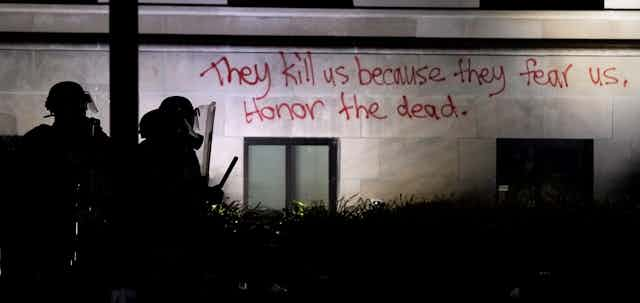How should a society allow for the legitimate use of force by police? Egon Bittner, the esteemed sociologist who specialized in policing, wrote in his book Aspects of Police Work:
“As long as there will be fools who can insist that their comfort and pleasure take precedence over the needs of firemen for space in fighting a fire, and who will not move to make room, so long will there be a need for policemen.”
Bittner argued that police “were created as a mechanism for coping with the so-called dangerous classes.” But the “dangerous classes” are simply people deprived of the privileges and societal benefits enjoyed mostly by rich white men.
Let’s consider five scenarios in which force is not required and where, therefore, police are not required.
Situations in which force is unnecessary
First and foremost, it must be acknowledged that most of everyday life needs no police intervention at all — including protests and demonstrations. That’s because people overwhelmingly police themselves, as individuals, families, road users, workplaces, associations, communities and protesters.
When it comes to people experiencing mental-health crises, what’s required is talk, experience and patience. If, in extreme cases, force is required to restrain a person for their own or others’ good, crisis clinic mental-health workers, skilled in its minimal use, should be called upon.
The use of uniformed, armed officers whose modus operandi is to demand obedience to barked orders or to resort to violence is clearly a criminally abusive method of dealing with such situations.

When it comes to traffic enforcement and accident resolution, police should not be involved. Speeding and other driving violations can now be monitored by technology or via public complaints. Leave accident resolution to insurance agents or other specialized officials. Where criminal driving is involved, unarmed driving violation investigators can be used.
The immediate decriminalization of the possession of narcotics and other drugs (beyond marijuana), as Canadian chiefs of police are recommending, is necessary. Addiction must be regarded as a public health issue to be dealt with by the appropriate specialists. Decriminalizing the entire illicit drug industry and regulating it like any other business would, obviously, remove the need for force by police in what is otherwise a huge area of criminal law enforcement.
Instead, we should create new organizations to handle much of what police do today.
Force doesn’t prevent or solve crimes
The use of force by police neither prevents nor solves crime for the vast majority of criminal offences. In fact, as Bittner wrote in his book:
“When one looks at what policemen actually do, one finds that criminal law enforcement is something that most of them do with the frequency located somewhere between virtually never and very rarely.”
Detective work certainly doesn’t require the use of force. It can continue to be conducted by unarmed, plainclothes specialists trained in talking to witnesses, conducting interrogations, assessing crime scenes and collecting evidence.
We’re therefore left with a problem. In Canada, spending on police in Ontario, British Columbia and Alberta is rising at a faster rate than other municipal spending as the national crime rate decreases. And in the largest 150 U.S. cities, police budgets have risen steadily for decades, even as crime decreased and during economic downturns, according to data compiled by the Lincoln Institute of Land Policy from U.S. census records.
This suggests, correctly, that policing has little or nothing to do with criminal law enforcement. As crime has gone down, police budgets have gone up. So what’s policing for?
As Bittner argued, it’s about protecting the wealthy from the “dangerous classes.”
Threats to order, property
The “dangerous classes” are those who are seen as a threat to public order and property rights. The job of police has long been to effect control — colonial, racial, class, gender and/or sexual — over citizens. Clearly, it’s time for this to stop.
The solution lies not with enforcing economic and social inequality, but in removing it. Putting our tax money towards this — for example, by building affordable housing — makes far more sense than shoring up a police institution that is too often brutal, colonial, racist, sexist and homophobic.

While there will always be occasions when legitimate force by police is necessary, they’re relatively few — and police shouldn’t be militarized in weaponry, rank or uniform. Get rid of all three, except for some small arms held in reserve for use only in exceptionally dangerous situations. Other agencies or officials can do much of what police do now.
So let’s defund the police and put the savings into social services. But let’s go further, and disband police forces as they’re currently configured and replace them with local community organizations, some highly trained members of which are empowered to use force as required by fellow citizens and according to circumstance.

